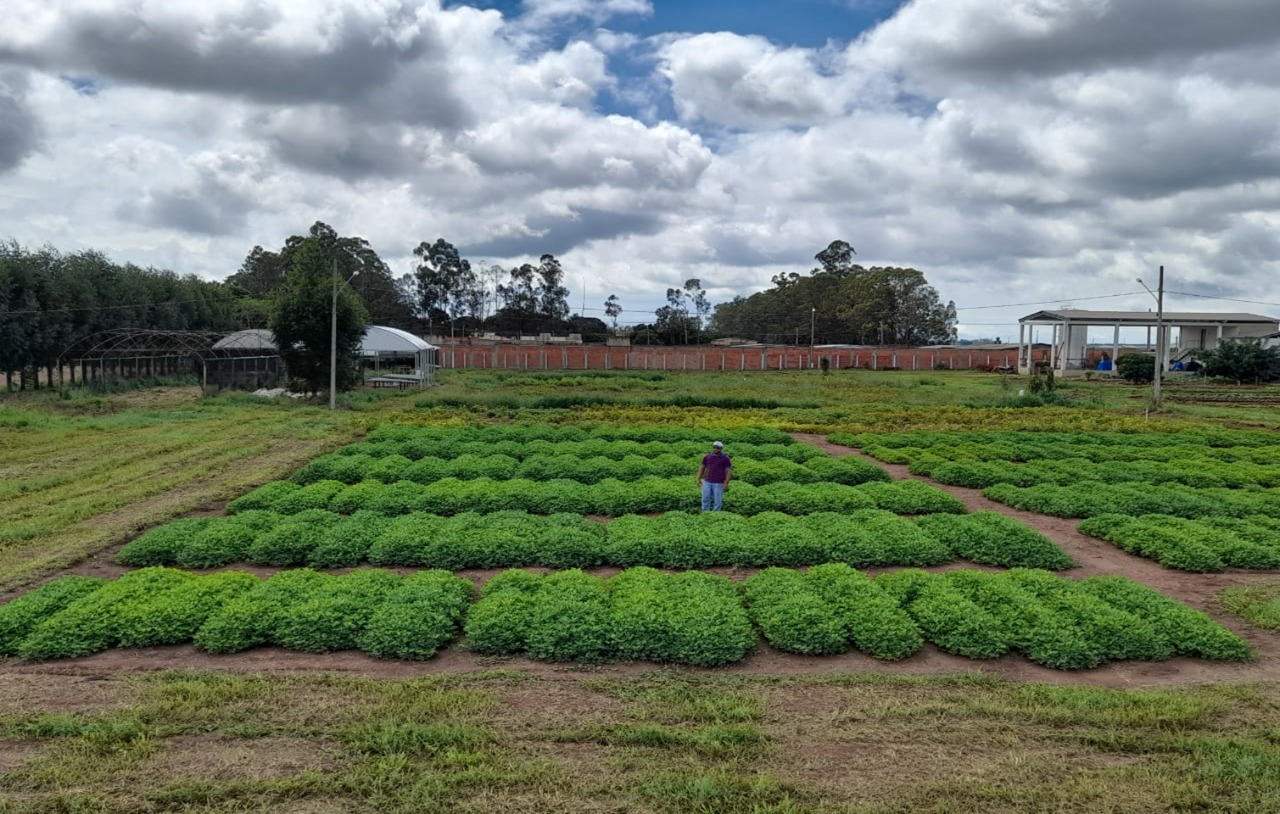Different sowing arrangements and peanut genotypes under the conditions of Campo Verde-MT
DOI:
https://doi.org/10.52755/sas.v2iedesp1.114Keywords:
Arachis hypogaea L., Spacing, Peanuts in Mato Grosso, Breeding ProgramAbstract
The present work aimed to evaluate the different sowing arrangements and peanut genotypes in Campo Verde-MT conditions. The experiment was carried out in the experimental area of "‹"‹the
Federal Institute of Education, Science and Technology of Mato Grosso – Campus São Vicente, Reference Center of Campo Verde, located in the municipality of Campo Verde – MT, in the agricultural year 2020/21. Sowing was performed manually on November 16, 2020. The experimental design used was a randomized block design, with four replications, in a 4 x 3 factorial scheme, with 4 genotypes (BRS 421 OL, BRS 423 OL, BRS 425 OL and 1952 OL) and 3 sowing arrangements (0.73 m x 0.17 m and 15 plants.m-1; 0.70 m and 20 plants.m-1; 0.90 m x 20 plants.m-1). Harvest was carried out 133 days after planting (DAP), where black spot severity (grades), 100 grain mass (g) and pod yield (kg.ha-1 and sacks.alqueire-1) were evaluated. In the experimental conditions in which this research was developed, it can be concluded that the sowing arrangements do not significantly influence the variables. However, the genotypes influenced the severity and productivity, standing out with the BRS 421 OL, BRS 423 OL and BRS 425 OL. Above all, further studies are recommended to confirm the results obtained.
Downloads

Downloads
Published
How to Cite
Issue
Section
License
Copyright (c) 2021 Daniele Fernandes Campos, Alexandre Caetano Perozini, Jair Heuert, Maxsuel Antonio Rodrigues, Maxuel Fellipe Nunes Xavier, Taís de Moraes Falleiro Suassuna

This work is licensed under a Creative Commons Attribution-NonCommercial-ShareAlike 4.0 International License.
Autores concordam com os seguintes termos:
a) Os autores mantêm os direitos autorais e concedem à revista o direito de primeira publicação, com o trabalho simultaneamente licenciado sob a LicençaAttribution-NonCommercial-ShareAlike 4.0 International, que permite o compartilhamento do trabalho com reconhecimento da autoria e publicação inicial na Revista SAS. A licença permite o uso, a distribuição e a reprodução irrestrita, em qualquer meio, desde que devidamente citada a fonte. Essa licença permite também que outros remixem, adaptem e criem a partir do seu trabalho para fins não comerciais, desde que atribuam a você o devido crédito e que licenciem as novas criações sob termos idênticos.
b) Não cabe aos autores compensação financeira a qualquer título, por artigos ou resenhas publicados na South American Sciences.
c) Os conceitos expressos nos artigos publicados na South American Sciences são de inteira responsabilidade de seus autores.








